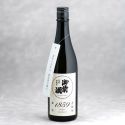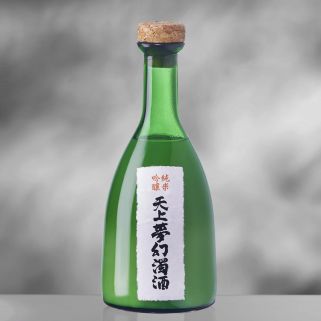The master craftsmen of Tsuji Honten began to wonder what “unshakeable nobility and beauty” they must pursue to perpetually continue to brew where they are, while reflecting on the legacy to be left for future generations.
To perfect their craft and purify every aspect of it, the answer becomes obvious: favor the Omachi variety of rice while converting their entire sake-making to Bodaimoto brewing.
Bodaimoto brewing, for the Gozenshu (sake of the Lords), is a medieval technique for making vats (Shubo, Moto) common 1,000 years ago, consisting of mixing malt in a large quantity of pure water.
For our Gozenshu 1859, the malted rice is placed in a cloth then soaked in a tank of pure water for 10 to 25 days and, under the action of natural lactic acid bacteria and yeasts naturally present in the environment, is loaded with lactic acid. . The acidity of the water (pH) can then rise to 6.5. This acidic water is called "soyashi" or "soyashimizu" water. It allows the creation of the starter or mother of sake. It promotes the development of good yeasts and prevents the formation or appearance of bad bacteria. The addition of steamed rice and kôji will allow the creation of shubo (starter, mother of sake). The kobo (yeast) is then added and will give birth 10 to 14 days later, to the moromi.
From this moromi will be extracted sake. "1859" corresponds to the birth of Omachi rice.
It was around this time that a farmer from Bizen (Okayama Prefecture), Jinzo Kishimoto, discovered and cultivated two rice plants, known today as Omachi, whose quality is nationally renowned in Japan.
The municipalities of Setocho and Akasaka in the former Akaiwa County, located southeast of Okayama, are known to produce the best Omachi rice.
For the past 25 years, Tsuji Honten has partnered with Setocho Omachi Bukai (the Setocho Farmers' Study Group on Specialty Omachi Rice) to supply their rice. In 2019, the year of the 160th anniversary of the discovery of the Omachi rice variety, it jointly launched a new project entitled “Tokujo Omachi Project” to create specialty quality Omachi rice.
In the early 1980s, Tsuji Honten spearheaded the rebirth of the Bodaimoto method, lost at the start of the Showa period (1926-1989). Although around 40% of their sake has been brewed using this method, they are convinced that this ancient brewing technique has endless possibilities.
By getting into the heart of their brewing philosophy and returning to a classic method as such, Tsuji Honten sets out to take the world by surprise by showing a deeper and more interesting world of sake. To launch the “100% Bodaimoto” plan, the Gozenshu were born.
This dry, transparent sake with a slight silver sheen is remarkable.
Aromas are reminiscent of dragon fruit, starfruit and green apple.
Mouth is complex, offering at first a beautiful acidity, almost pearlescent, with notes of grapefruit zest and lemon.
Then flavors evolve, rounder, fresh walnut and other nuts, mushrooms, pear, banana.
.png) As for tastings, we recommend pairing with dried fruits, blue cheese, avocado, fresh goat cheese, tuna sashimi, grilled fatty fish, oysters, caviar, Iberian pork ham.
As for tastings, we recommend pairing with dried fruits, blue cheese, avocado, fresh goat cheese, tuna sashimi, grilled fatty fish, oysters, caviar, Iberian pork ham.


















.png) As for tastings, we recommend pairing with dried fruits, blue cheese, avocado, fresh goat cheese, tuna sashimi, grilled fatty fish, oysters, caviar, Iberian pork ham.
As for tastings, we recommend pairing with dried fruits, blue cheese, avocado, fresh goat cheese, tuna sashimi, grilled fatty fish, oysters, caviar, Iberian pork ham.
















